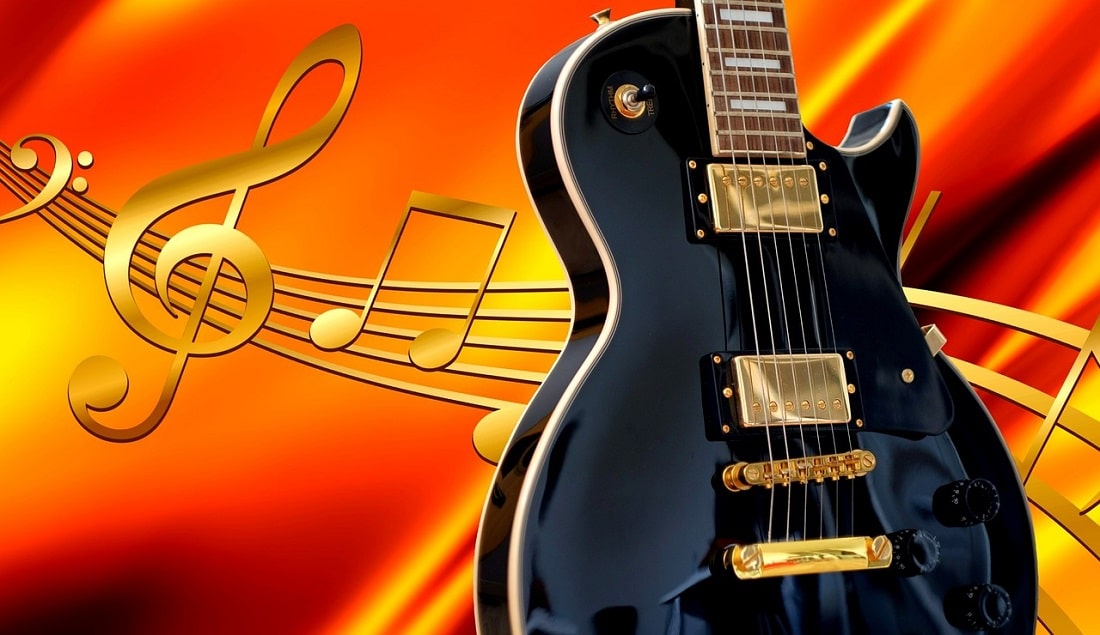In literature, there are several examples of tone that show the overall mood of the writing, implied by the words the author chose in a specific situation to make the reader feel a specific feeling.
However, in music, the tone has a totally different meaning.
So, what is tone?
What are the factors that affect tone? And what are the different types of tone?
We’ll answer all these questions in this article, so keep reading.
What is Tone?
The word tone has several meanings in music, as it can refer to the intervals in a music scale, the quality of the sound, or specific musical notes.
All definitions are used simultaneously, depending on the context.
Tones in music can be divided into two parts.
Fundamental Tones
A fundamental tone refers to the lowest frequency in a harmonic series or the tonic.
It’s also called the prime tone, and together with the harmonic relationship, it determines the tone’s relative pitch.
Overtones
An overtone is a fundamental tone with some added upper partials to make it sound more complex.
It’s the natural tone or fundamental tone with other frequencies to create harmonics.
What Does the Word Tone Refer to in Music?
The word tone is used in several contexts, and in each one, it has a different meaning. Some of these meanings are less widely used than others.
Intervals in Scale
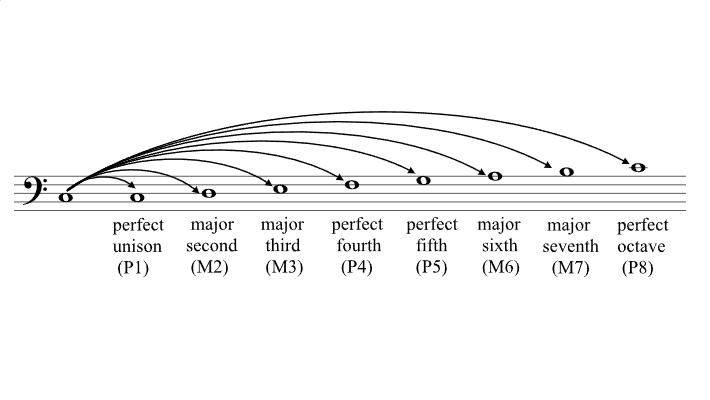
This is probably the most straightforward use of the word tone in music.
The music scale in western music is divided into different pitches that make up notes. The spaces between these pitches are called half steps or semitones.
A whole step in the music scale is made of two semitones or a full tone.
Quality of Sound
The tone in sound quality refers to how the same pitch sounds when played on different musical instruments.
This is also called timbre, and it’s the most widely used definition of the word tone in modern music.
This difference is due to the varied balance between the note played and the harmonic overtones, as this balance differs from wind to string instruments, making the note sound differently, although it’s the same pitch.
In some cases, the musical instrument will produce a pure tone, which only includes the fundamental frequency, with no overtones.
A complex tone contains both.
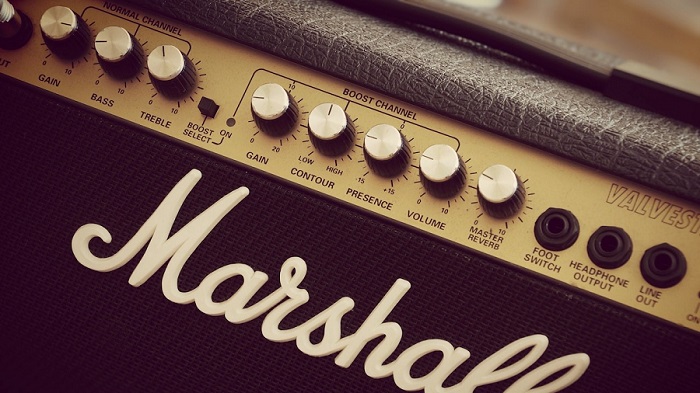
As a musician, you can enhance the tone of music using several accessories like amplifiers.
Some musicians also use computer software programs to create different tones.
According to this definition, combining overtones and fundamental tones is the core of building harmonies and harmonics.
Specific Music Note
According to this definition, the word tone refers to a single frequency or pitch produced by a musical instrument when the music player manipulates it.
For example, if you’re playing the guitar and pulling the A-string, the sound produced is the musical tone-A.
As you pull other strings while shortening and lengthening them, you’ll produce other tones.
According to this definition, there’s some confusion between the definition of a tone and a pitch, as sometimes they refer to the same thing.
However, this is the least used definition of the word tone. In most cases, musicians will use the word note or pitch instead.
How is Tone Identified in Music?
Several factors affect tones in music and make them sound the way they do.
Changing any of these factors will make the tone sound different every time it’s played.
Pitch
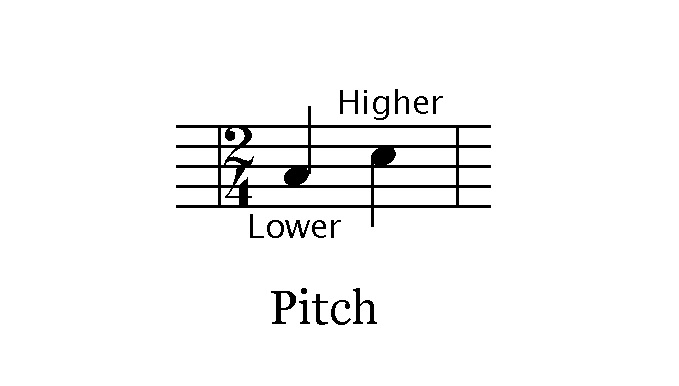
The pitch of the tone is where it’s played. It refers to how low or high the sound is.
Duration
A tone can be long or short, depending on how long you want to make it last.
Volume
A tone that is played hard will sound louder than a tone that is played softly. This will determine how powerful you want your tone to sound.
Type of Instrument
The type of instrument and how it’s made will affect how the tone will sound, even when the same pitch or note is produced.
For example, a G note produced from a guitar doesn’t sound like a G note produced from a piano.
Even if we’re talking about two guitars, the wood used to make the body, the material used to make the strings, and the instrument’s age will also affect how it sounds.
Technique

This refers to the way a singer will sing to produce a specific tone based on the type of music they’re singing.
The singer’s vocal tone is also affected by their natural voice, as some people are able to reach the highest tones and pitches.
Changing someone’s tone and technique is possible when they’re taking adequate lessons.
However, there will be some limitations that the singer won’t be able to overcome because of the boundaries of their natural voice.
Quality
The most difficult factor is the quality of the tone itself.
Whether it’s happy or sad, the tone’s definition can be dependent on how the musician and the audience perceive it.
This is why listening carefully to music to identify tones is essential.
Because we’re all different, one tone might sound happy to someone because it reminds them of a happy memory.

However, another person listening to the same tone might feel that it’s sad and depressing.
This is why it’s quite challenging to use this factor to identify the tone because it differs from one person to another.
It’s also affected by the emotional and mental state of the same person.
What are the Different Types of Tone?
Tone can be divided into multiple varieties, but they all fall into one of two categories.
Consonant
A consonant tone is not complicated in the way it’s created or sounds. This is why it usually has a pleasant and uplifting character.
These smooth tones are created in unison, perfect octaves, perfect fifths, and perfect fourths.
This tone is usually produced by a major note or key, accompanied by its relative minor. It doesn’t have any complex overtones, and it sounds simple.
Dissonant
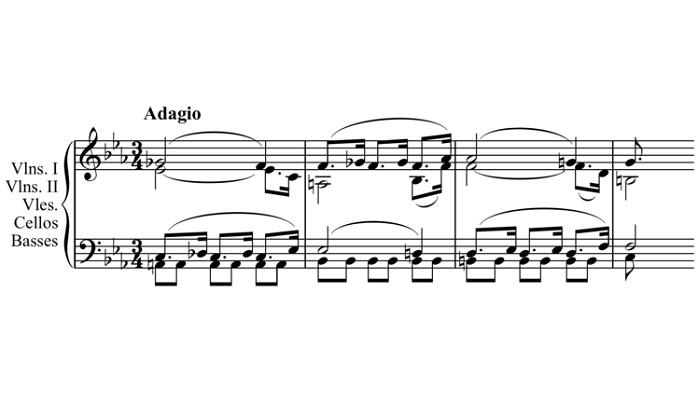
A dissonant tone is complicated, and it’s played in a way to convey strong feelings and create tension. It usually sounds unpleasant, scary, or depressing.
These tones are played using minor sevenths, major sevenths, minor seconds, and major seconds.
The musician will not include the major key and its relative minor to play a dissonant tone.
They will often follow a complex structure and overtones that clash with each other instead of complementing one another.
Between these two major types, there are other types of tones that are less consonant but not fully dissonant.
For example, major thirds, minor thirds, major sixths, and minor sixths are considered less consonant but not entirely dissonant.
The major tones create a pleasant feeling, while the minor ones create a feeling of unrest.
Why is it Important to Understand Tone in Music?

Understanding all three definitions of the word tone and how they’re used in music is essential for every aspiring and avid musician.
However, musicians shouldn’t confuse the word tone with other concepts like the loudness of the pitch or the way to play it.
The tone in music is of extreme importance in all genres of music and can be used to explain the emotional and technical sides of music.
Nevertheless, its importance and significance usually differ according to the music genre and music piece in which it’s used.
During a music class, rehearsal, or performance, all the musicians need to understand which definition of the word tone is actually used or referred to.
In studio recordings, the word tone is still extremely important.
Audio engineers need to understand what their clients need when they refer to the word tone to be able to deliver the tones they need.
Audio engineers can study the tone in music to edit musical productions and create the proper effect.

In different forms of classical music, the tone plays a significant role. For example, in an opera, the tone is used as a building block to tell the opera’s story.
In addition, major tones in instrumental and vocal pieces are used to create a positive feeling or vibe, while minor tones show agony and sadness.
In R&B music, minor tones are usually used to convey the emotional side of the songs or music played.
They’re also combined with some major tones to create the relevant atmosphere that corresponds to the lyrics or the overall vibe of the music piece.
During a music performance, the musician or singer will have tonal instructions written on the page to explain exactly how a tone is played or sung.
The purpose of these instructions is to make the musician aware of the feeling that this tone is trying to explain and show.
The same note or tone will sound differently when produced from two different instruments.
Again, this is because the tone, in this case, will be used to deliver a different meaning.
For example, a musical tone G produced from an electric or bass guitar that is used in hard or heavy rock music will be different from the musical tone G produced from an acoustic guitar that you use for country or Latin music.
Both tones are also played differently, although they’re technically the same.
What is a Tone Color?
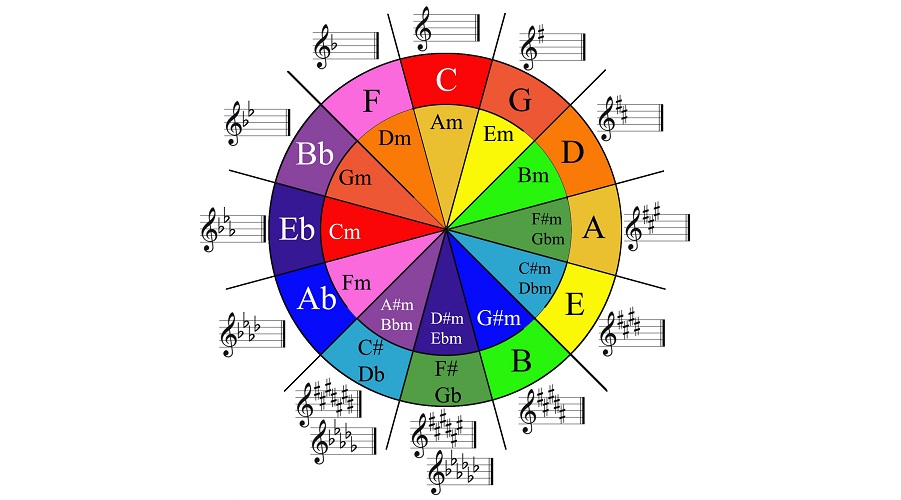
The tone color is the sound trait of a particular musical instrument and refers to how it sounds when it’s played.
It’s not related to how the listener will perceive it but rather how and why the instrument was built in the first place and the role it plays in musical compositions.
Every musical instrument has its distinctive and unique tone color, so the same composition will sound different if the instruments are replaced or omitted.
As a result, some instruments will be used when the composer wants the musical composition to be dull and dark, while others will be used when the music is supposed to be uplifting and cheerful.
Here are some examples of the tone colors of several musical instruments.
Piano

As a combination of a percussion and string instrument, the tone color of the piano can be described as bright, mellow, and rich.
These definitions differ based on how the instrument is played.
When the sound produced contains a blend of harmonics, the tone color is usually bright and uplifting.
Higher harmonics usually lead to this bright tone quality with a clean and clear sound. In some cases, it can also be a little metallic.
With fewer upper harmonics, the piano will sound more mellow and warmer.
This is the sound the piano produces when the composition wants to focus on deeper emotions. With a lack of harmonics, the piano will sound flat and weak.
Flute
The flute has a clear and light sound, usually producing a higher pitch than other instruments.
When it’s favorable, the flute’s tone color is full, colorful, bright, clear, and resonant.
In less favorable circumstances, this brightness might make the flute sound too airy, hollow, or dull.
It can be muffled or breathy, and it might sound too sharp, to the point that it ruins the entire musical piece.
Violin
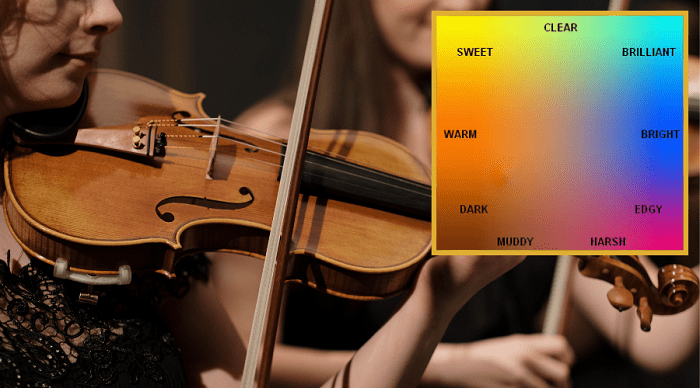
A violin has a wide tone color that can range from very low and chilling to high and uplifting.
The sound produced is slightly higher than other string instruments like the cello and the viola, but it can still be warm and mellow.
This instrument has a complex tone color, but it’s usually sweet and full, as it resembles the human’s voice in some cases.
This is why it usually plays a leading role in the orchestra.
Trumpet
The trumpet has a metallic and bright tone color, although the lower pitches are rather dark.
It’s powerful and usually used in a composition where the composer wants to make a statement.
Because the sound from the trumpet is slightly higher than other instruments, it’s usually used in uplifting compositions or military marches.
In addition, the sound usually projects for a long distance, so this explains why the trumpet is usually used as a background instrument.
